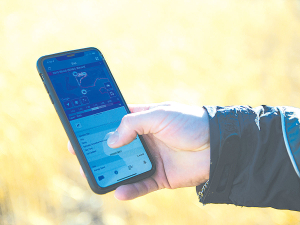OSPRI introduces movement control area in Central Otago to protect livestock
From 1 October, new livestock movement restrictions will be introduced in parts of Central Otago dealing with infected possums spreading bovine TB to livestock.
 farmers using MyOSPRI have created just over 15,000 electronic farm-to-meatprocessor and 1300 farm-to-farm Animal Status Declarations.
farmers using MyOSPRI have created just over 15,000 electronic farm-to-meatprocessor and 1300 farm-to-farm Animal Status Declarations.
In the past year, farmers using MyOSPRI have created just over 15,000 electronic farm-to-meatprocessor and 1300 farm-to-farm Animal Status Declarations (ASDs).
MyOSPRI is a new farmer customer portal, and the first functionality added to it was the ability to send electronic ASDs.
OSPRI says the next major milestone in MyOSPRI is to replace the NAIT system with a more userfriendly and fit for purpose traceability system. The aim is to make interacting with OSPRI’s traceability and the TBfree programme easier.
The organisation adds that, as part of the build, it is working to update MyOSPRI more often, with incremental changes so farmers can benefit from the new traceability features as they’re ready.
OSPRI says the purpose of improving the NAIT system is to decrease the barriers that farmers currently experience when trying to complete their NAIT obligations.
“This should improve compliance and therefore more accurately reflect what is on farms throughout New Zealand.”
Farmers can register for MyOSPRI now and use it to send electronic ASDs.
A New Zealand dairy industry leader believes the free trade deal announced with India delivers wins for the sector.
The Coalition Government will need the support of at least one opposition party to ratify the free trade deal with India.
Primary sector leaders have welcomed the announcement of a Free Trade Agreement between India and New Zealand.
At Pāmu’s Kepler Farm in Manapouri, mating has wrapped up at the across-breed Beef Progeny Test.
More than 150 people turned up at Parliament recently to celebrate the 20th anniversary of Horticulture New Zealand (HortNZ).
Biosecurity New Zealand says Kiwis should continue to keep an eye out for yellow-legged hornets (Vespa velutina) over the holiday season.